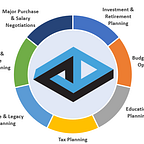Is the Housing Boom a Bubble?
The real estate market is hot! Since last summer, the S&P/Case-Shiller National Home Price Index has indicated the average home is increasing by 0.99%/month, more than three times the historical average. Anecdotally, home buyers are frustrated as bidding wars and offering above asking prices is the new norm.
Meanwhile, some pundits have invoked the idea that the housing market may be in a bubble. Robert Kaplan, president of the Dallas Federal Reserve, spoke just two weeks ago, noting “We’ve got real excesses in the housing market.” So, are we witnessing a potential redux of the 2005–2007 housing bubble and speeding to an imminent bust?
What’s Causing the Home Price Boom?
Here are the main causes of the recent housing boom:
Stimulus Dollars Are Competing for a Finite Home Supply
Even though many Americans are still reeling from the pandemic financially, median personal income rose a staggering 12.2% between the end of 2020 and the first quarter of 2021 to its highest level ever. This is the largest quarterly increase in personal income since data started being collected in 1947. On average, income has increased by 1.3% per quarter, just above the rate of inflation.
The spike in income was largely driven by the duo of stimulus payments sent out in early January and late March of this year. These payments continued through April, putting money into the pockets of Americans. Adding to the strong financial position of most Americans is the continued unemployment bonuses of $300/week and disbursements of the latest round of PPP loans, making many flusher with cash than ever.
With more dollars competing for a largely finite housing supply, of course prices are increasing.
The Federal Reserve Has Made Mortgage Payments Cheaper
In today’s interest rate environment, a 1% decrease in mortgage rates translates to a roughly 12% lower mortgage payment. As a result of the Federal Reserve’s efforts to stimulate the economy by pushing interest rates as low as possible, mortgage rates are at historical lows. The interest rate on a 30-year mortgage is just below 3%. This rate is currently below the recent rate of home price inflation, enticing buyers into thinking that mortgages could “pay for themselves” as the price of their home increases over the cost of their mortgage. The prospect of being able to use one’s home not only for personal use, but as an appreciating investment has further spurred demand for housing.
And, of course lower payments create new potential home buyers from renters who were previously unable to afford a mortgage. Again, more demand going after a finite supply.
Supply Factors: Slow New Construction & Material Shortages
While infinitely better than 2020, doing business in 2021 is still far from normal. Restrictions have been eased, but production is still below pre-pandemic levels. As a result, the output of building materials such as lumber and various metals has not been able to meet demand. This has led to the price of lumber increasing nearly threefold year-to-date, and metals such as steel, aluminum, and copper also jumping in price.
These supply factors have further increased the price both existing and new homes.
Eviction/Foreclosure Moratoriums:
At the onset of the pandemic the government took steps to prevent economically harmed individuals from being evicted from their homes. This eviction moratorium has reduced the potential supply of homes for sale, as properties currently occupied by a tenant/borrower who is delinquent on payments can not be sold to a new occupant. This has served to reduce the potential supply of homes for sales and likely increased prices. These moratoriums are slated to end by June 30th. Therefore, I expect this constraint on supply to be very short term in nature.
Is There a Housing Bubble Destined to Burst?
A housing bubble occurs when home price gains are accompanied by excessive risk-taking and financial leverage. Naturally, any “bubble” would be destined to eventually “burst” because of these excesses. One way to determine if there is excessive risk-taking within the residential real estate market is to compare the median price of a home to personal income.
According to this analysis, the prevalence of “buying more home than you can afford” is low. In fact, government stimulus has buffered household finances so much that personal income relative to the cost of a home is the highest it’s been in a decade. This is true even before considering mortgage rates are at historical lows.
The type of excessive “leverage” one would expect during a “housing bubble” is largely absent. Therefore, with no “bubble,” the likelihood of an imminent housing “bust” should be low. HOWEVER, we should not minimize the critical roles government stimulus and the effects of the pandemic have played creating the recent spike in home prices. These tailwinds to home values should dissipate within the coming months, potentially leading to a period where prices level out as a normal balance between supply and demand is restored.
Here’s the bottom line. I feel the recent trend of skyrocketing home prices is short term in nature and it is not a bubble. Since real estate is not a short-term trading instrument, individuals and investors should do their best not to catch FOMO (fear of missing out) and overextend themselves just to “get a piece of the action.”
